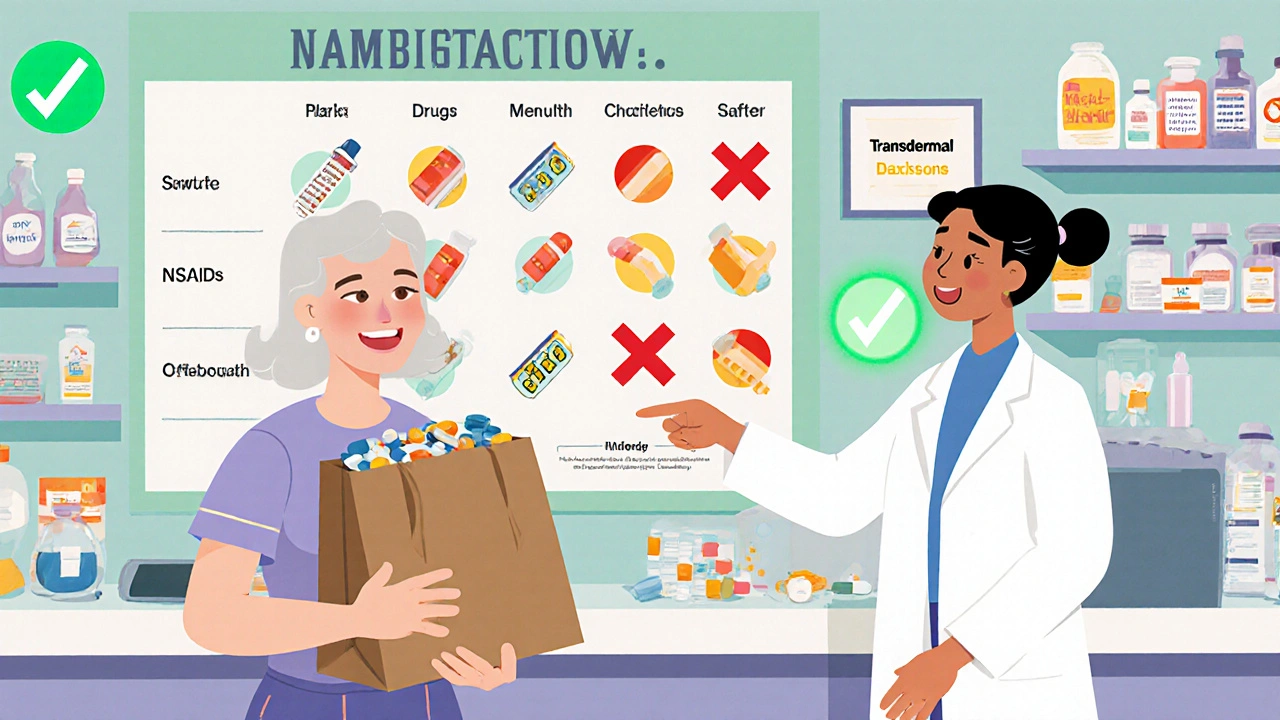Polypharmacy: Risks, Red Flags, and How to Stay Safe
When someone takes polypharmacy, the use of multiple medications at the same time, often five or more. Also known as multiple drug therapy, it’s not always a mistake—but it’s often a quiet crisis waiting to happen. This isn’t about someone taking vitamins and an occasional painkiller. This is about a 72-year-old on blood pressure pills, a cholesterol drug, a diabetes med, a sleep aid, and a pain reliever—all prescribed by different doctors, with no one looking at the whole picture.
Geriatric polypharmacy, the specific challenge of managing multiple drugs in older adults is especially risky. As we age, our bodies process drugs slower. Kidneys and liver don’t work like they used to. A dose that was fine at 50 can become toxic at 75. And when you add in medication interactions, how one drug changes how another works in the body, the danger multiplies. Think Ginkgo Biloba thinning the blood even more when you’re already on warfarin. Or evening primrose oil lowering your seizure threshold while you’re on an antipsychotic. These aren’t rare accidents. They’re predictable outcomes of fragmented care.
The biggest problem? No one’s counting. A patient might see a cardiologist, a neurologist, a rheumatologist, and a primary care doctor—all prescribing, none coordinating. That’s how you end up with someone taking four drugs that all cause dizziness. Or three that slow your heart rate to dangerous levels. That’s where deprescribing, the careful process of stopping or reducing unnecessary medications comes in. It’s not about cutting pills cold turkey. It’s about asking: Is this still helping? Could this be causing more harm than good? Is there a simpler, safer way?
And then there’s adverse drug events. These aren’t just side effects. They’re hospital visits, falls, confusion, kidney damage—all tied directly to the drugs meant to help. Studies show that over half of hospitalizations in older adults on multiple meds are preventable. That’s not bad luck. That’s a system failure.
You don’t need to be elderly to face this. Anyone on five or more prescriptions, especially with chronic conditions, is at risk. The solution isn’t stopping everything. It’s asking the right questions. What’s this pill for? What happens if I stop it? Could this be causing my fatigue, my falls, my memory lapses? The posts below give you real tools to spot the red flags, talk to your doctor, and take back control—without risking your health.
Deprescribing Frameworks: How to Safely Reduce Medications and Cut Side Effects

Deprescribing is the safe, structured process of reducing unnecessary medications to cut side effects and improve quality of life-especially for older adults on multiple drugs. Learn how it works, which meds to question, and how to start the conversation with your doctor.
- November 14 2025
- Tony Newman
- 11 Comments
Post-Menopausal Women and Medication Changes: What You Need to Know for Safety

Post-menopausal women face unique medication risks due to hormonal changes and polypharmacy. Learn how to safely manage hormone therapy, avoid dangerous drug interactions, and reduce side effects with practical, evidence-based strategies.
- October 30 2025
- Tony Newman
- 9 Comments
